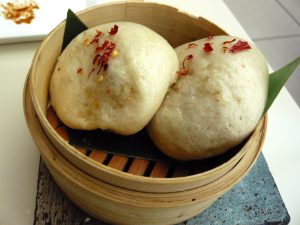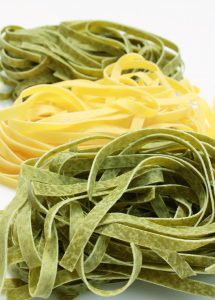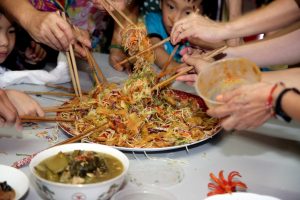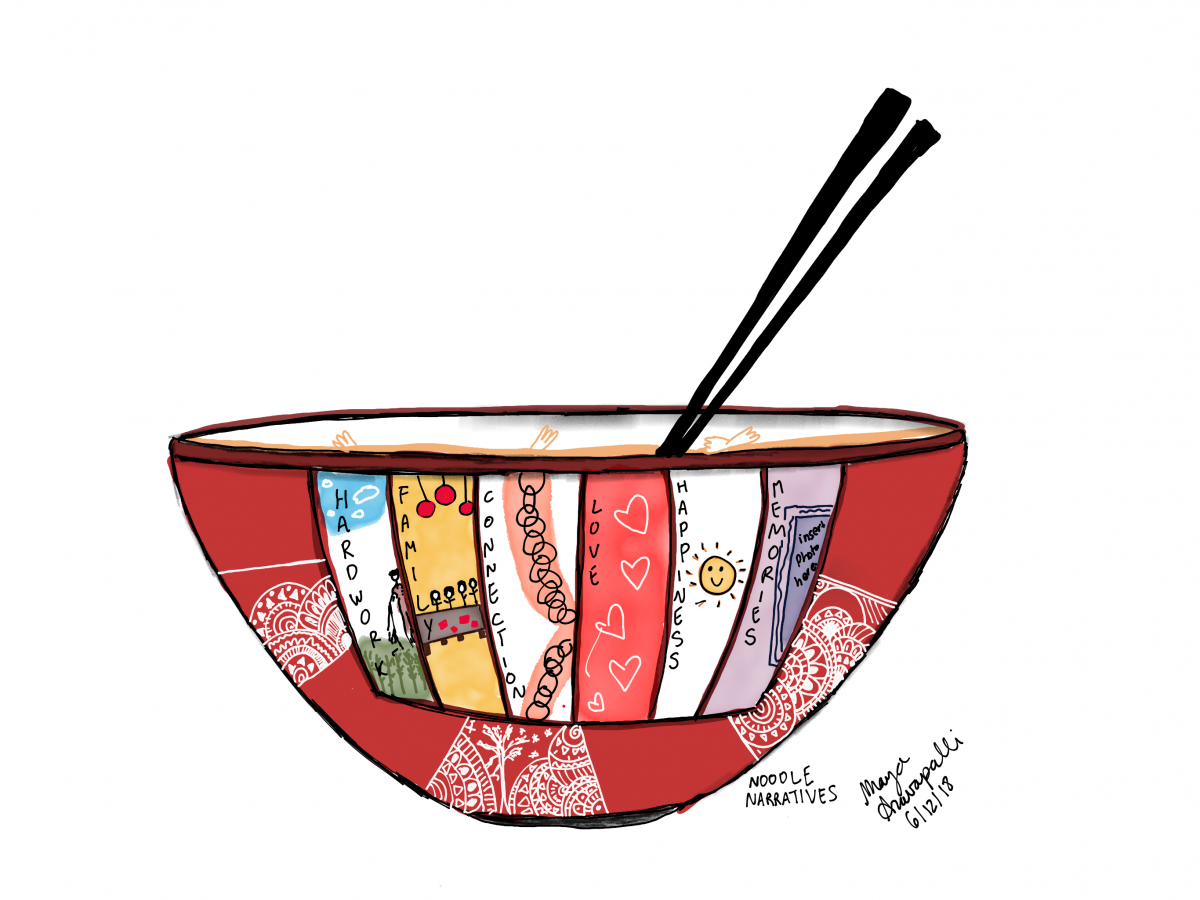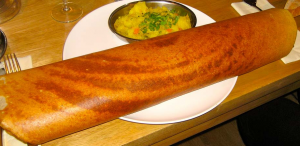Maya Aravapalli
Professors Li and Ristaino
Italian/Chinese 376
26 June 2018
The Instant Impact of Instant Noodles in India
In this world, there are so many factors that impact our every day lives. Change is inevitable, and often hard to notice. New companies are born while others die, and this process has a significant impact on the economy, which in turn affects our standard of living and our lives. Of the factors that affect our lives, food is a salient one. Food is a reflection of culture and tradition and has a massive impact on our day to day lives. It is more than something one eats in order to work; it is an experience that is cherished by every individual in the world. Because of its enormous impact on everyday life, changes in food start to impact the social culture. One such example is the emergence of instant noodles in India. It was summer in 1983 when my uncle was just eight years old. My family was impoverished, and they barely had enough money to eat; however, every once in a while my uncle and his friends would save up some money and get some street food on their way back from school. He recalled that they would always try and find ways to eat something different, but money and access to different foods were obstacles that were hard to overcome. At the time, the only food available was traditional Indian food that would sometimes take hours to cook; however, when Maggi Noodles was introduced, it changed the whole dynamic of cooking. All a person needed was hot water to share a tasty, easy-to-make meal. It was something that they could make themselves, and it was very time efficient. The distinctive branding of the noodles allowed for more people to hear about them, that in turn increased the popularity of the product. These noodles marked a revolutionary shift in India’s food culture. They were the go-to food whenever someone was hungry, and due to its low price, it was a very accessible product for a majority of India’s population (Nagarajan). The emergence of instant noodles in India, made famous by the brand “Maggie Noodles,” has had an enormous impact on India’s social and economic culture by allowing for more women to go to work, conquering hunger for the poor, and improving India’s economy.
Instant noodles were first introduced to the world in 1958 by a Japanese-Taiwanese businessman named Momofuku Ando. He came up with the concept of “3-minute noodles” and invented a way to mass produce them. While the noodles were a success, their consumers demanded more flavor and taste of the noodles. Hence, the company provided flavor packets along with the noodles. The brand he created later became known as Nissin Noodles that makes varieties of different flavors of “cup noodles.” To this day, Momofuku Ando is known as the father of instant noodles. Since the invention of instant noodles, they have become a worldwide phenomenon and are consumed by people of all different backgrounds (“History”). The mass production of these noodles made them easily accessible everywhere; however, India did not catch on to this “instant noodle craze” until 1983 when “Maggi noodle” was first introduced to India.
Maggi started off as a brand in Switzerland in 1884 that made powdered soups. Julius Maggi, the founder of Maggi, aimed at making food that was affordable for the average worker and was time efficient. Its primary mission was to create a fast and easy meal that would help working women save time and focus on work (“Maggi History”). Maggi later expanded and created new products such as soups, sauces, seasoning, and noodles. Julius Maggi invested a great deal in the advertisements that helped the company grow and become more successful. Maggi was acquired by Nestle in 1947 and has sparked a noodle revolution in India (“Maggi History”). Its branding and impact on India’s consumers make it one of the biggest companies in India. Maggi noodles have had a great impact on the everyday life of the average working woman in India. Its low price for a filling meal has made it accessible to even India’s low-income families. The iconic branding of “2-minute noodles” baffled India’s women as they would spend hours in the morning cooking breakfast before going to work. Therefore, the Maggi brand targeted working women promising more efficiency due to its noodle’s fast cooking time. However, it did not initially have great success with India’s demographic. People still preferred to have traditional, home-cooked meals. After conducting many surveys, the brand started targeting children. Their slogan, “ Easy to cook, Good to eat” shows how the noodles are easy to cook for parents, and good to eat for the children. They not only target children, but they also target adults who are preparing the noodles as well. The noodles only became popular among India’s population once the company improved it branding techniques.
Due to the typical Indian dinner time being between 8:30 pm and 11:00 pm, Maggi was a great snack in between meals. The company initially targeted working women, but later advertised it as a family brand. They focused mainly on convince and health while advertising, and promoted their brand in many ways: sampling, advertising, product size, customized products, and variety of flavors. These methods worked for changing the consumer demand for traditional Indian food to this fast and easy meal. However, the Indian population was still skeptical of the health effects of instant noodles (“Branding Strategies”). Because of health concerns, Maggi introduced the whole wheat instant noodle called “Maggi Atta Noodle.” This introduction helped solve some of the concerns the Indian consumers had about the unhealthy nature of instant noodles.
Maggi noodles have played a significant role in improving India’s economy. After the introduction of Maggi Noodles, India adopted the noodle culture and became the fifth in rank in terms of consumption of instant noodles. The industry of instant noodles has grown 7.6% between the years 2010 and 2017. Maggi shares 61% of the market for instant noodles in India (BusinessToday.In). In 2015, there was a ban on Maggi due to excessive amounts of lead, and it was taken off the shelves all over India. During this period, Maggi was still in high demand by Indian consumers who had gotten used to eating it. Before the ban, Maggi noodles had control over 80% of the instant noodle market in India, but it seemed that Maggi’s reign as the number one instant noodles brand in India was falling apart. However, after the ban was lifted, consumers went back to buying Maggi products (Mitra). Because of the prohibition of Maggi noodles, Nestle launched a campaign called a “#WeMissYouToo” to show how the Maggi ban has changed the everyday lives of its fans. During an interview I conducted, I asked to “describe what life was like when Maggi was banned in India,” to which Prahalad Krishna, a senior in high school, responded, “I tried looking for alternatives for Maggi, but none of the other brands tasted as good as Maggi. I just had to wait it out” (Krishna). Although Maggi was banned in India for about eighteen months, the influence and impact of Maggi were made crystal clear.
Maggi is one of the “fast foods” that has had fairly steady growth over the years that have had a direct correlation to the increase in nuclear families and employed women. India is a traditionally male-dominated society, and women did not start going to work until recently. Due to social and economic changes that led to the increase of purchasing power and needs, women started to be part of the labor force. Many factors impact fast food consumption among nuclear families with working mothers: “large variety /periodic new product, the price is affordable, cooking is considered a lower priority, and home delivery (comfort and convenience of food) ” (Joshi & Chopra). Based on the study of the fast food consumption of nuclear families with working women, it can be concluded that Maggi noodles, that is considered “fast food” is a reliable option for working women in urban areas of India. The noodles fit almost all of the factors that are described above; therefore, it is one of the foods that have contributed to a shift in India’s food culture.
To see how the trends in food culture have shifted since the introduction of Maggi, I conducted a series of interviews. Among those was a working woman from India named Rathna Krishna. She has been working for Delhi telephones for twenty-two years and is the personal assistant to the deputy manager. I asked her a number of questions related to how Maggi has impacted the social culture in India from the perspective of a working woman. She expressed that she has never liked Maggi noodles herself, but her children love them. It saves time before going to work, and it is effortless to make. When asked if Maggi has changed India’s social culture in any way, she responded “Maggi has become the national fast food in India. Everyone is crazy about the brand, and even street vendors sell Maggi as a snack or meal. It is cheap and accessible to much of India’s population. Before Maggi came to India, people only ate traditional Indian food, but once it was introduced, it became everyone’s favorite snack – both adults and children” (Krishna).
The next interview was her son, who is a senior in high school in India for a different perspective. When asked how often he eats Maggi and why he likes it, he responded, “I eat Maggi Noodles about 3-4 times a month. I like it because the taste is good and it is very easy to make. During the noodle ban, I tried many other ramen brands, but none of them tasted as good as Maggi. In my school, you see at least one person bringing Maggi noodles to school every day.” When asked if he has any personal stories related to Maggi that he would be willing to share, he responded “I went to Kedarnath, Uttrakhand [a state in India] for a religious trip, and it is up in the mountains where it is extremely cold. It is only accessible through a helicopter ride, and there is absolutely nothing there – no stores or anything. We got out of the helicopter, and there was a vendor who was selling hot Maggi. A plate of hot Maggi in that weather was a luxury” (Krishna). By conduction these interviews, it became clear that Maggi is a brand that is available all over India – from the busy streets of Delhi to the deserted mountain tops of Uttrakhand. It is a quick and easy meal that has impacted both working women and children all over India.
Maggi has almost become a part of Indian culture due to its immense popularity. To test if it has truly had an impact on Indian culture, I decided to interview a college student, Anirudh Krishna, who has lived in India for the majority of his life but moved here for college. During the interview, I asked him if he thinks Maggi noodles have impacted his diet even here in the United States where fast food resultants are much more available. He eats Maggi about two times a week, and as a college student its sometimes hard to find fast cheap food. He recalls that he did not eat Maggi much while living in India, but after moving to the United States, he consumed it more. Anirudh described that he eats Maggi when he misses home and it provides a connection he has with his past and his family. Even though it is not traditional Indian food, it still provides this nostalgic feeling that all comfort foods offer (Krishna). Ramen noodles have been a part of the college culture for years due to its convenient and efficient preparation time. Maggi noodles are the most valued brand of ramen noodles by people of Indian origin who have never lived in India. I interviewed my friend, Shailee Parekh, who has lived in the United States all her life. Although she has never been exposed to the popularity of Maggi noodles in India, she still prefers Maggi to other brands of Ramen noodles. She has grown up with it even though it is not available here. When asked why she believes Maggi is so prevalent in India, she responded, “I am a vegetarian, and the variety of vegetarian instant noodles that the Maggi brand provides is one of the reasons I choose Maggi. So that could contribute to the popularity of Maggi in India” (Parekh). The interview shows that the Maggi brand has had an impact on the Indian culture as Indians all over the world love eating Maggi noodles. Through conducting several interviews, it became clear that Maggi has had an impact on people of many different backgrounds and age groups.
Instant noodles have also been suggested as a possible solution to conquer hunger among the poor. With its low price and accessibility, it may be a suitable solution to the problem of hunger; however, Maggi has mainly targeted middle class and urban consumers. Due to the complex supply chain processes that need to take place for Maggi to reach India’s villages, the company has avoided focusing on rural areas. According to Sounak Mitra, “about 70% of India’s population still lives in its 638,000 villages, more than 55% of retailing actually happens in metros, mini-metros, and tier-I cities, according to a Technopak study” (Mitra). If Nestle India put a percentage of its advertisements in rural areas, it could help fight the hunger problem in India. According to the Times of India, instant noodles could be a terrific solution to world hunger as food becomes scarcer in the future. It has also been observed by researchers, that “Instant noodles thus far have been virtually unstoppable – and, as such, their accomplishments are worthy of serious attention” (“Instant Noodles – Quick Solution” ). Perhaps, instant noodles could be a solution to the global hunger problem as it is a cheap and filling meal that can be had any time of day.
In conclusion, Maggi has had a significant impact on the lives of working women who do not have time to make a traditional Indian meal all the time. It could also be a solution to combat the issue of hunger in rural India, and it has helped India grow economically. While the Indian culture did not embrace the new instant noodles at first, it has expanded and become India’s favorite “fast food.” Mothers make it for their children as a quick and easy meal, and once the children are old enough, they make it themselves. It is widely available, from grocery stores in the city to small street vendors in the desolate Himalayan mountains. It is a delicacy in India and has become one of the most popular meals among children and adults alike. Its taste and aroma is recognized by many and has had an enormous impact on India’s social and economic culture. Maggi is the most prominent noodle dish in India, and it is eaten throughout the nation. It is a quick and easy meal to turn to in the middle of finals week, or a snack to share with friends in between meals. Although changes in social and economic cultural differences are not readily noticeable when one is living through time, Maggi has played a massive role in shaping India’s food culture and has contributed to making India’s workforce more inclusive.
Works Cited
BusinessToday.In. “Will India Ever Get over Its Maggi Hangover?” How Nike’s Marketing Strategies Helped It Become a Global Brand, Business Today, 30 Nov. 2017, www.businesstoday.in/current/economy-politics/maggi-nestle-india-ltd-uttar-pradesh- fine-fssai-fsda-hangover/story/264986.html.
“History of Instant Noodles.” History | World Instant Noodles Association., World Instant Noodles Association, instantnoodles.org/en/noodles/index.html.
Ideasmakemarket. “Branding Strategy of Maggi Noodles.” IdeasMakeMarket.com, 3 Mar. 2015, ideasmakemarket.com/2012/02/ideasclash-2-0-entry6-branding-strategy-of-maggi- noodles.html.
Joshi, Kiran, and Komal Chopra. “To Study Factors Affecting Fast Food Consumption for Nuclear Families Having Working Women in Mumbai / Pune.” International Journal for Research in Applied Science & Engineering Technology (IJRASET), Mar. 2016, www.ijraset.com/fileserve.php?FID=3716.
Krishna, Rathna. Personal interview. 27 June 2018.
Krishna, Prahalad. Personal interview. 27 June 2018.
Krishna Anirudh. Personal Interview. 27 June 2018.
“Maggi® History.” Https://Www.nestle.tt, www.nestle.tt/brands/allbrands/maggi-history.
Mitra, Sounak. “How Nestle Is Rebuilding in India-18 Months after the Maggi Ban.” Https:// Www.livemint.com/, Livemint, 15 Feb. 2017, www.livemint.com/Companies/ xyFCHn7hGJm1zUkesEVy5L/How-Nestle-is-rebuilding-in-India18-months-after-the- Maggi.html.
Nagarajan, Vijay. Personal Interview. 27 June 2018.
Parekh, Shaliee. 28 June 2018.
PTI. “Instant Noodles: Quick Solution to World Hunger? – Times of India.” The Times of India, India, 27 Aug. 2013, timesofindia.indiatimes.com/home/science/Instant-noodles-Quick- solution-to-world-hunger/articleshow/22085102.cms.


